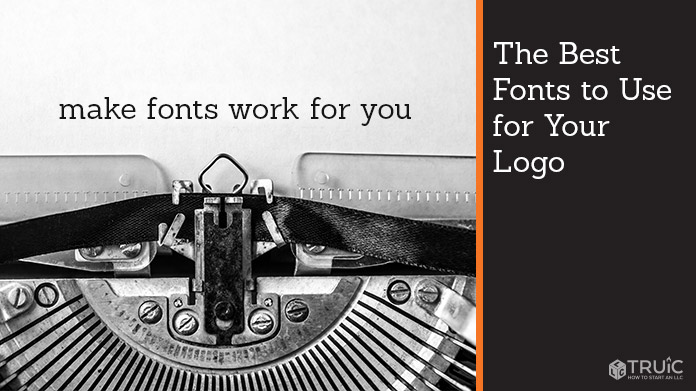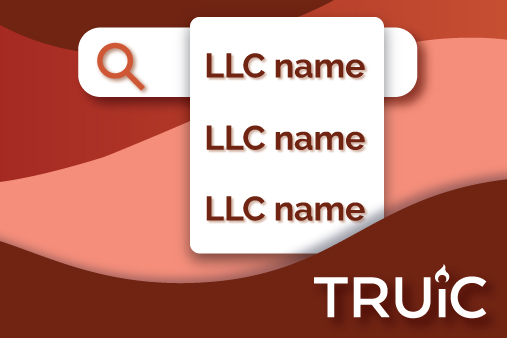The Best Fonts to use for Your Logo
The type of font you use can be grouped into a few basic categories. But the evolution of text has seen so many new introductions on the scene that it can be difficult for anyone to keep up with. When it comes to basic writing (emails, Word docs, etc.), you probably have a go-to font and size that you use again and again.
When it comes to your logo though, you might need to think outside the font a little. We’ll look at the top 20, so you can determine which one would make the most sense for you. If you already have a type of mind though, visit our Free Logo Generator to start designing.

What You Need to Know About Fonts
Typography Classifications
Typography is a fancy name for arranging text. A large part of how you arrange text will have to do with what kind of font you use. In general, there are a few basic types:
- Serif: This is characterized by a small line attached to the stroke of a letter. For example, a little horizontal bar that can be seen at the bottom of an F.
- Sans Serif: Clean, readable text that will look like standard Serif but without the extra embellishments.
- Script: Closely resembles standard handwriting or calligraphy. Seen anywhere from wedding invites to menus.
What Are Popular Fonts in Logos?
Brands tend to use sans serif as a general rule, as you’ll see from the lion’s share of our top 20. The clean text makes it easy to read so customers can glance quickly at the name or monogram and move on.
But you can consider the other major classifications too. After all, script typography seemed to work well for Coca-Cola. (If you were wondering the font name for those classic letters, it’s known as Spencerian.) We’ll also look at one kind of hybrid font so that you can get an idea of the other style choices out there.
The Top Fonts by Category
Popular Serif Types
Glyphic Serif
This type of text is a fairly artistic one, with the characteristic flourishes that emphasize the vertical axis. You can identify glyphics by its signature triangle shape as the uniformity of thickness throughout the lines. Glyphics have been around since as far back as the 15th Century.
Vollkorn
This font is technically a modern one, even if it’s based on the smaller fonts of hand-setting days. There is nothing particularly flashy about this font, but it does get the job done. When your logo is meant to be as simple as possible, you can consider using Vollkorn to juxtapose against a particularly intricate design.
Garamond
Plenty of famous brands have adopted Garamond, such as Rolex and Neutrogena. This typeface was inspired by the 16th Century designs of Claude Garamond. Used at everything from the World’s Fair to American Eagle clothing, it’ one of the more expressive fonts while still maintaining its sophistication.
Butler
Butler is inspired by the old text of the Renaissance, and it was created as a way to give a classic serif a bit of a modern spin. If you had a catering business serving gourmet food to a classy clientele, this might be the right font for you
Savoy
Used by brands like Vogue on its website, the Savoy typeface is bold and stylish. The detailing is there, which suggests ornamentation, yet the font is still orderly enough to be easily read. If you’re going for a more fashionable approach, this could be the one for you.
Popular Sans Serif Fonts
Gilroy
Radomir Tinkov has long been known to tinker with fonts. It led to his starting his own workshop and creating Gilroy, a type of sans serif that pays tribute to the beauty of geometric symmetry. It tends to be better suited for modern graphic design. So an education company might use it to appeal to a younger audience.
FF DIN
This kind of font is a good way to squish your text into a small space. From packaging to logos, FF Din has really taken off since its original appearance (somewhere around the turn of the millennium). Its basic structure is easy to read and excellent for no-nonsense companies.
Ostrich Sans
This text is an option if you know you want capital letters only, but it can make for a big impression if you end up with it. The stress of the letters is seen at the top as it draws the eyes upward. This modern design has been around in digital formats since the early 2010s.
Odibee Sans
This font is a play on the abbreviation for one-day build. It took designer James Barnard one rotation of the Earth to get the characters (numbers, letters, etc.) down. Perhaps this memorable story is why it’s gained so much traction in a short period of time. Friendly and fun, Odibee Sans works great if you’re looking to pair standard text against the handwritten kind.
Futura
As the name suggests, this font is all about forward-thinking concepts. Its minimalism stresses the importance of order and form. Seen in such famous logos as FedEx, this font makes the most of every inch of space it takes up. (The only real drawback is that it’s a little overdone by this point.)
Univers
Calling back to the imperfections of handwriting, Univers essentially eschews perfect symmetry for something a little more nuanced. This is a great choice if you’re looking to attract an audience with your personality rather than a more straightforward approach to business.
Amsi Pro
Brought about long before the internet was even a word, this font from the 1900s might remind you of a comic book. Available in practically every thickness available, it’s particularly fun for designers to play with. (Having been around for over a century, there’s been more than one variation too.) So if you wanted to put the first word of your company in thick blocks and the next in razor-thin lines, this might be the font for you.
Gafata
This font was originally designed for smaller sized text, although there’s more versatility to it than meets the eye. There’s a lot of leeway in here if you want to mix and match based on the audience that you’re trying to appeal to. The font is a little playful and artistic while still being easily readable.
Intro
A lot of the newer fonts have favored form over fun, which can definitely be the right strategy for many businesses. However, if you’re trying to attract an audience that wants to really engage with you on a more light-hearted level, then the Intro font puts in adds a little more character to your characters.
Foco
You can remember this font because of the characteristics of its second and fourth letters. Focusing on the circular aspects, this font will give you plenty of rounded text to make your logo both legible and creative. This one is highly recommended if you want your customers to remember you after only taking a quick glance at your name and slogan.
Rational TW
Ever wonder how to make your text take up precisely the same amount of space, somehow covering the gaps between disparate letters like I and O? This font might just be the one for you. Each character will take up the same amount of space with Rational TW, which makes it both easy to read and a fun little Easter egg to the designers of the world. (BTW, that TW in the name stands for Typewriter.)
Popular Script Fonts
Rock Salt
This font was created after its designer grabbed a few felt-tip markers to create a typography that spoke to him. He was inspired by the lettering of his youth, found mainly on kid’s products and comic books. This one can help your brand come across as a bit of a rule-breaker.
Alex Brush
If you’re looking for fancy calligraphy-style, Alex Brush is often used for formal branding. The main drawback of this kind of script font is that they can be difficult to read. The traditional cursive lettering might cause your text to run together or otherwise be unclear to your audience.
Henry Morgan Hand
This type of font relies on cursive for the capital letters, but its lower-case font is closer to standard print. The juxtaposition of the upper- and lower-case plus the odd spacing design in this font is a real eye-catcher while still being easy to read. This could be an excellent choice if you want to make an impression.
Hybrid Font
Rufina
The stencil look of yore comes to life with Rufina. It uses classic typeface but breaks up the letters as if they were created with a stencil. There are other types of stencil fonts out there, but Rufina is recommended for logos because it tends to be a little more malleable for designers.
Finding Your Font
Narrowing it down by typography categories can make it easier to start exploring the different types of fonts. Ideally, you’re looking for something that is difficult to reproduce, which means that you might consider putting your own spin on a design or perhaps choosing one that is less popular.
Once you’ve decided on a font for your brand, the next step is to create a logo. If you need help with desiging a logo for your brand, check out our top 5 best logo makers of 2021 review and find the best tool to help you create a logo for your small business.

